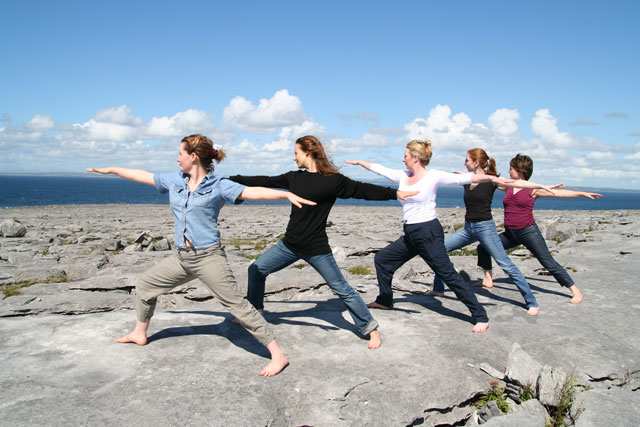Yoga is an ancient body of knowledge which is over 5,000 years old and contains many practices that we can use in our modern lives to alleviate stress, improve our health and fitness, reduce stress and improve our overall sense of well-being.
 Many people think that Yoga is primarily physical exercises and postures, and are not aware that many of the more transformational techniques help to focus one’s mind, learn to let go of thoughts, change one’s breathing in order to alter one’s energy levels and so much more.
Many people think that Yoga is primarily physical exercises and postures, and are not aware that many of the more transformational techniques help to focus one’s mind, learn to let go of thoughts, change one’s breathing in order to alter one’s energy levels and so much more.
To learn the more subtle practices, one really needs to attend some classes or a yoga retreat where a very experienced yoga teacher who will give you one-to-one guidance to teach you the practices, and also ensure that you are doing them correctly.
Quality weekend yoga retreats (and week-long retreats during the Summer) are offered all year round at the Burren Yoga and Meditation Centre
However, there are many other simpler practices that one can do at home on your own without a teacher.
- Start with an experienced yoga teacher rather than a DVD
Go to a local yoga class with an experienced and well trained yoga teacher, and then practice some of the yoga postures and the breathing practices at home each day. This is much better than simply watching a yoga video or a yoga book, as it will ensure the teacher can see your alignment and give you advice and adjustments to ensure you are practising correctly.
- Consistency is better than quantity
You will get better benefits if you can practice between 5 and 20 minutes per day, rather than practising one or two hours once or twice per week.
- Enjoyable practices are easier to keep up
Best to choose some of the postures and practices that your yoga teacher is teaching you that you really enjoy. And then practice these at home first.
- First thing in the morning is best
It is recommended to practice first thing in the morning as this is when your body is more stiff. The improved flexibility and increased clarity of mind and sense of well-being that you get from your early morning practice, can then be brought with you to help influence the rest of your day.
- Always practice on an empty stomach
This is also common sense in that if you have food in your stomach and are bending forward, or doing twists, or even inversions that you may feel sick. However there are also deeper reasons which were discovered by the ancient yogis which found that the energy flows much more freely and you will get much better subtle benefits when you do not have food in your stomach.
- Avoid tea, coffee or other stimulants before your practice
As yoga works with all levels of one’s being, including the more subtle flow of energies, it is best to do the practices while your whole being is unaffected by external stimulants. If you have coffee in your system, not only will the more subtle effects of the practices not work so well… but your awareness will be clouded and you will not be able to notice the more subtle effects.
- Use Yoga Nidra deep relaxation when you come home from work
There is an ancient practice known as Yoga Nidra, where you lie on your back and follow the instructions of a yoga teacher which brings you to deeper states of relaxation. When practised in the evening when you get home from work, this wipes the slate clean from the previous part of the day, leaving you much more refreshed and feeling clear for the evening ahead. A CD of the yoga Nidra Practice can be ordered for €17.50 at Burren Yoga website
Cleansing Recipes
So it’s a new year, out with old and all that, new prospects, resolutions and dreams, go for it. But it’s cold outside and the couch is comfy and there’s loads of time for turning over that new leaf, walking more, eating less, tomorrow I promise.....


